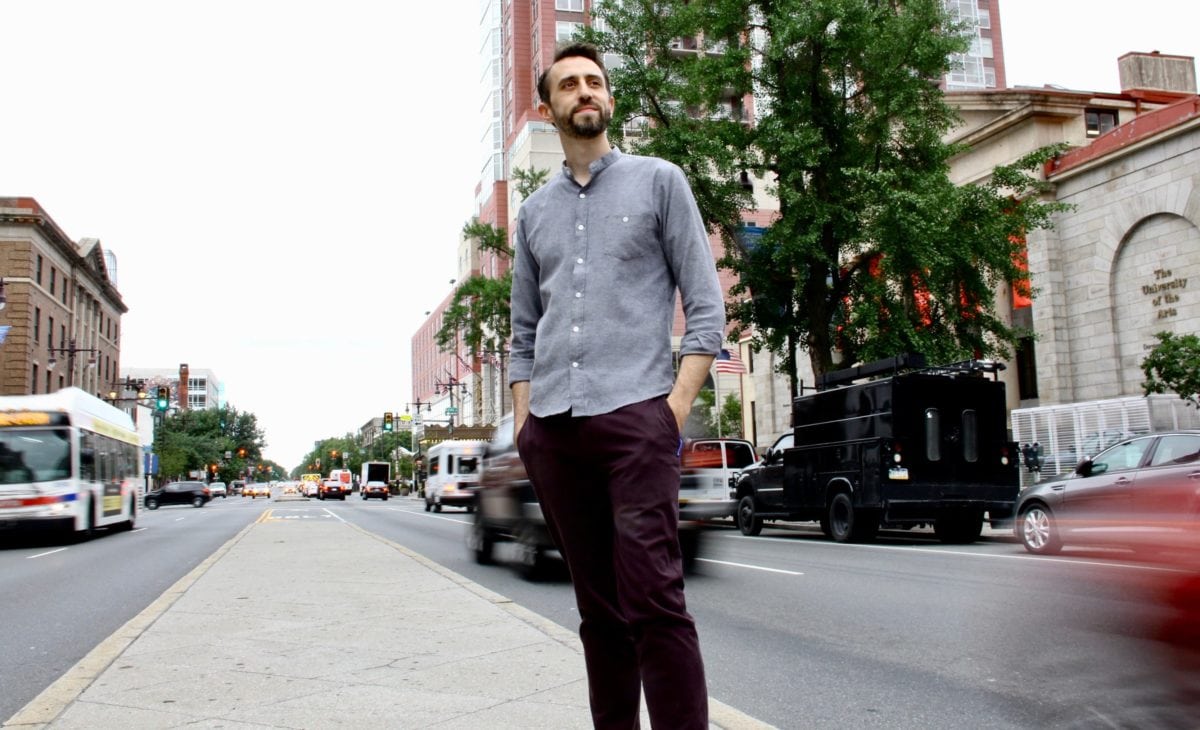Ask Tim Moyer about design thinking and he lights up. “It’s a different way of looking at the world,” said Moyer.
“Most things that we deal with in everyday life are cobbled together systems that are often times interoperable or at odds,” Moyer said. “You have your transportation system you take to work — that’s a conglomeration of many different systems. Someone designed each of those subsystems but it all makes up a larger system.”
Moyer, both a University of the Arts Multimedia Program alum and lecturer is at home when talking about designing for the world: “As UX designers, we’re trying to answer, ‘Why are we building this, who is going to use it and how are they going to use it?’”
In his role as a UX Certificate program advisor to UArts, Moyer helped administrators at the 141-year-old institution think about how to best cultivate future UX pros. “I wanted to help create a program that anticipates change and balances business with experience design,” Moyer said. “Often designers have great ideas but need the tools to make the case as to why research and design will compliment business objectives.”
Utilizing rapid prototypes that can be quickly tested and following Agile methodology is key in that work process, he said.
“People remember things in moments,” said Moyer, who also consults Thomas Jefferson University Hospitals on VR, AR and experience design. “Marketing efforts are moving from the information age to the experience age. Human-centered design is at the core of experience design.”
Learn moreCertificate programs from UArts Continuing Studies — UX starting in Fall 2018 and JavaScript coming in Spring 2019 — are designed for freelancers interested in entry-level design positions or people working within a company who want to leverage these new tools in their work.

The one-year UX program features a cohort model, faculty practitioners, hands-on group projects and a series of guest speakers from the industry (which are free and open to the public).
Caitlin Perkins, UArts Director of Continuing Education and Special Programs, tells us why investing in the cohort model makes sense: “It allows students to move through the program together, while building community and working in teams on real-world projects. We’re focused on curriculum that will fill a need the industry is currently looking for.”
Aisha Waters, a certificate student in the Graphic Design Certificate Program at UArts and currently a UX project manager, said she originally gravitated towards UArts because it offered real-world skills training, and the evening classes were easy to fit into her full-time work schedule.
“[The cohort model] offered a lot of collaboration,” Waters said. “I appreciated the constructive criticism and having someone else look at a project and see it in a completely different light. It’s all part of design thinking ”
The concept of design thinking, or human-centered design, is at the core of the new UX program at UArts. Moyer believes it will offer students great value, as this concept is about more than simply visual design — it moves into other areas of how we move through the world.
“It’s really about getting into the creative process of exploration so you can offer different solutions and better understand a client’s needs. Designing in context, for context is really critical,” said Moyer.
The goal is to help students think big and connect them to the resources they need to be successful.
“This program is about more than just building websites,” Moyer said. “These principals influence management, leadership operations. There’s really no end to the value of design thinking or human-centered design.”







